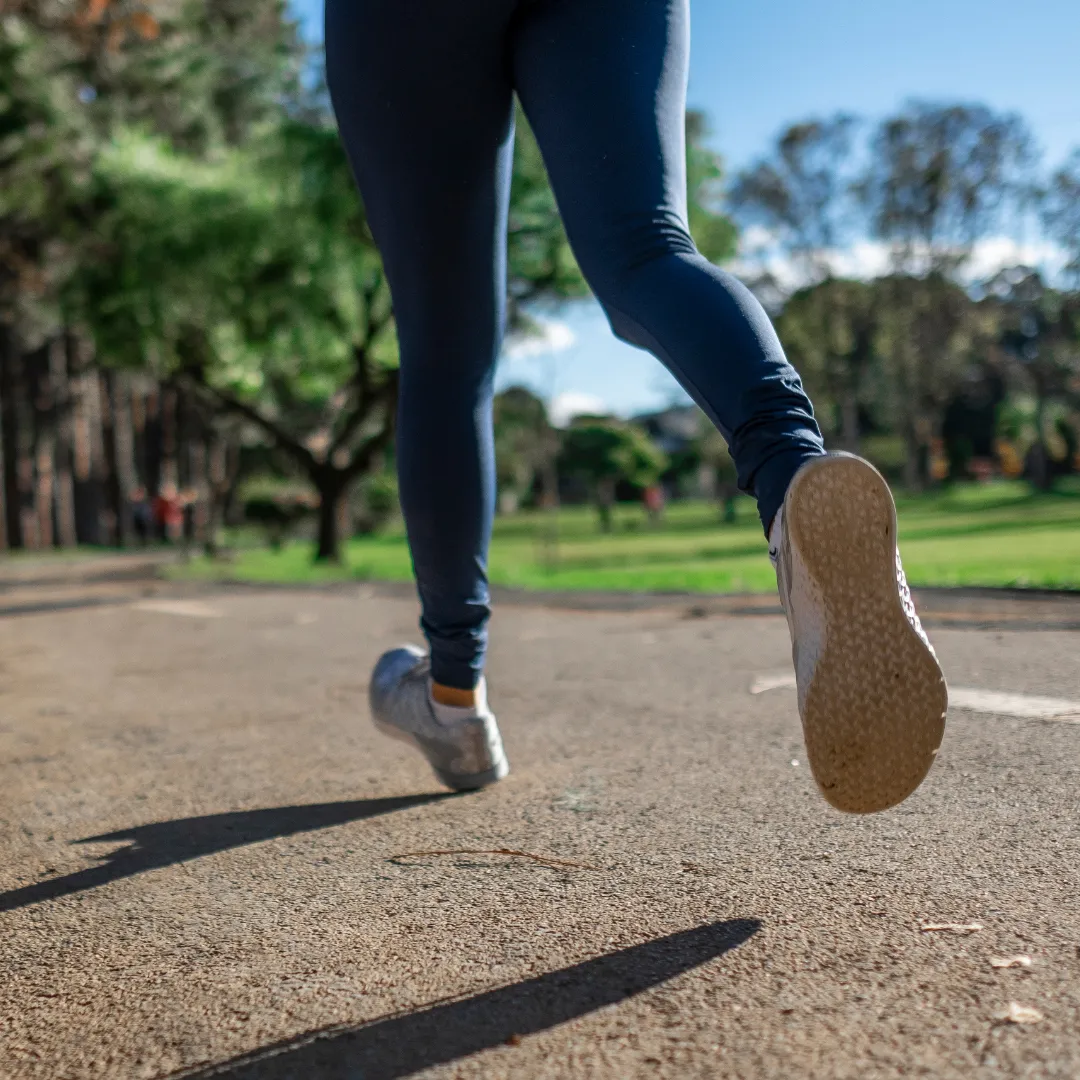Read our Blog

Is Running Bad For Your Knees?
"Run often. Run long. But don't outrun your love for running." - Julie Isphording
How many times have you heard someone say, "You shouldn't run, its bad for your knees..."
or "running puts too much stress on your joints..." ?
Humans are bipedal creatures designed to move forward on two feet. Doesn't it seems odd that the most efficient way of moving our bodies from point A to point B would be bad for our joints? Yet running receives a lot of criticism by the general public and even some medical professionals for “putting too much stress on the joints” leading to pain, injury, and osteoarthritis.
I am here to share with you the truth... Running is not inherently bad for your knees and does not cause arthritis!
And here is the proof to show it!
Many people believe that arthritis is a disease caused by "wear and tear" or overuse. They make the connection between this belief of wear and tear and the repetitive forces endured by the knees with running thinking it causes arthritis.
Evidence does not support that running is associated with increased risk of osteoarthritis (OA).
However, there is evidence that suggests decreased physical activity is associated with increased incidence of osteoarthritis.

Running is an effective form of activity to control weight, manage BMI, and reduce systemic inflammation (all factors that contribute to OA). The repetitive movement and force within the joint actually stimulates repair and maintenance of healthy cartilage. Running can actually decrease your risk of OA. This research is not applicable to individuals who already suffer from ligamentous injury or cartilage abnormalities.
The cartilage in our knees functions as a shock absorber. This material does not have a blood supply. It gets its oxygen and nutrients from the surrounding joint fluid. Repeated compression of the joint allows fluid to flow in and out of the cells delivering nutrients to the tissue.
Picture what happens when you squeeze as sponge under running water. The water releases, and the sponge fills back up again. This cycle continues as long as the water source keeps flowing. The same process occurs in your knee joints with running.

Activity is like the water source. The weight that bears down on your joints when you exercise forces water molecules out of the cartilage. When the weight is lifted, water flows into the cells bringing oxygen and nutrients the joint.
This process keeps the joint and cartilage nutrient dense and healthy.
Still think running might be bad for your knees?
Let’s look at the research that indicates running does not cause damage to the knees or increase risk of developing osteoarthritis.
A study by Eliza(4) compared 45 long distance runners to 53 non-runners over the span of 20 years. X-ray imaging showed no difference in knee osteoarthritis between the two groups.
Another study by Kessler(5) looked at the short-term effects that long distance running has on cartilage and meniscus. Cartilaginous volume was measured by MRI in 48 runners before a 20 km run, immediately after the run, and after a one hour recovery. Decrease in cartilage volume was found immediately after the run but was no longer significant after one hour. The recovery of cartilage and meniscal volumes suggests that these tissues are able to adapt to the loads caused by running.
Krampla(7) conducted a 10-year study looking at the changes in knee joints of marathon runners. No adverse long-term consequences were observed in six of the seven active runners at the 10- year MRI follow up.
A longitudinal study by Sohn(8) compared 504 former college cross-country runners with 284 former college swimmers. The subjects were observed for an average period of 25 years. They found that moderate long-distance running (average 25.4 miles per week) was not associated with higher incidence of osteoarthritis of the hip or knee.
A study by Kujala(9) looked at the prevalence of knee OA among former athletes of varying sports. The prevalence of knee OA determined by X-ray was 3% in shooters, 29% in soccer players, 31% in weightlifters, and 14% in runners. This study does not control for knee joint trauma contributing to the development of osteoarthritis; however, it does not support the idea that running is worse for your knees than other forms of physical activity.
Lane(10) performed a study including 33 matched pairs of long-term, long-distance runners and non-runners over the age of 50. The study showed no difference in the incidence of osteoarthritis in runners and nonrunners. The results remained the same at a 9-year follow up.
BIG PICTURE
Our bodies are designed to move fast, and our joints are designed to withstand the demands of running. The repetitive movement that occurs with running facilitates the delivery of nutrients to the knee joints and stimulates repair mechanisms to maintain healthy cartilage.
There are limitless forms of physical activity to optimize health and fitness. Running may not be for everyone, but don't let anyone try and convince you that running is bad for your knees. The evidence indicates running does not inherently cause damage or increase your risk of developing osteoarthritis in your knees.
If you are experiencing knee pain with running click here to speak with a doctor of physical therapy to determine the root cause of your pain.
Written by Hannah Sweitzer, PT, DPT, OCS, Cert. DN, CSCS
If you run, you are a runner. It doesn’t matter how fast or how far. It doesn’t matter if today is your first day or if you’ve been running for twenty years. There is no test to pass, no license to earn, no membership card to get. You just run. - John Bingham
References
Ian J. Wallace, Steven Worthington, David T. Felson, Robert D. Jurmain, Kimberly T. Wren, Heli Maijanen, Robert J. Woods, Daniel E. Lieberman. Knee osteoarthritis has doubles in prevalence since the mid-20th century. Proceedings of the National Academy of Sciences Aug 2017, 114 (35) 9332-9336; DOI: 10.1073/pnas.1703856114
Sophia Fox AJ, Bedi A, Rodeo SA. The basic science of articular cartilage: structure, composition, and function. Sports Health. 2009;1(6):461-468. doi:10.1177/1941738109350438
Tamer TM. Hyaluronan and synovial joint: function, distribution and healing. Interdiscip Toxicol. 2013;6(3):111-125. doi:10.2478/intox-2013-0019
Eliza F. Chakravarty, Helen B. Hubert, Vijaya B. Lingala, Ernesto Zatarain, James F. Fries. Long Distance Running and Knee Osteoarthritis: A Prospective Study, American Journal of Preventive Medicine, Volume 35, Issue 2, 2008, Pages 133-138, ISSN 0749-3797, https://doi.org/10.1016/j.amepre.2008.03.032.
Kessler, MA , Glaser, C. , Tittel, S. , Reiser, M. , Imhoff, AB Volume changes in the menisci and articular cartilage of runners: an in vivo investigation based on 3-D magnetic resonance imaging. Am J Sports Med. 2006;34(5):832–836.
Kessler, MA , Glaser, C. , Tittel, S. , Reiser, M. , Imhoff, AB Recovery of the menisci and articular cartilage of runners after cessation of exercise: additional aspects of in vivo investigation based on 3-dimensional magnetic resonance imaging. Am J Sports Med. 2008;36(5):966–970.
Krampla, W.W., Newrkla, S.P., Kroener, A.H. et al. Changes on magnetic resonance tomography in the knee joints of marathon runners: a 10-year longitudinal study. Skeletal Radiol 37, 619–626 (2008). https://doi.org/10.1007/s00256-008-0485-9
Sohn RS, Micheli LJ. The effect of running on the pathogenesis of osteoarthritis of the hips and knees. Clin Orthop Relat Res. September1985:106 –109
Kujala UM, Kettunen J, Paananen H, Aalto T, Battie MC, Impivaara O, et al. Knee osteoarthritis in former runners, soccer players, weight lifters, and shooters. Arthritis Rheum. 1995;38:539 –546.
Lane NE, Michel B, Bjorkengren A, Oehlert J, Shi H, Bloch DA, et al. The risk of osteoarthritis with running and aging: a 5-year longitudinal study. J Rheumatol. 1993;20:461 –468
Cymet, Tyler Childs and Sinkov, Vladimir. "Does Long-Distance Running Cause Osteoarthritis?" Journal of Osteopathic Medicine, vol. 106, no. 6, 2006, pp. 342-345. https://doi.org/10.7556/jom_2006_06.0004
Our one-on-one treatment sessions ensure that you fully understand your body and take ownership of your health so that you can have control over doing the things you love!
Send us a Message
Let's Have a Chat
954 - 519 - 4185
Find us at
2852 E Oakland Park Blvd
Fort Lauderdale, FL 33306
2024 REVIVE PHYSIOTHERAPY | ALL RIGHTS RESERVED


